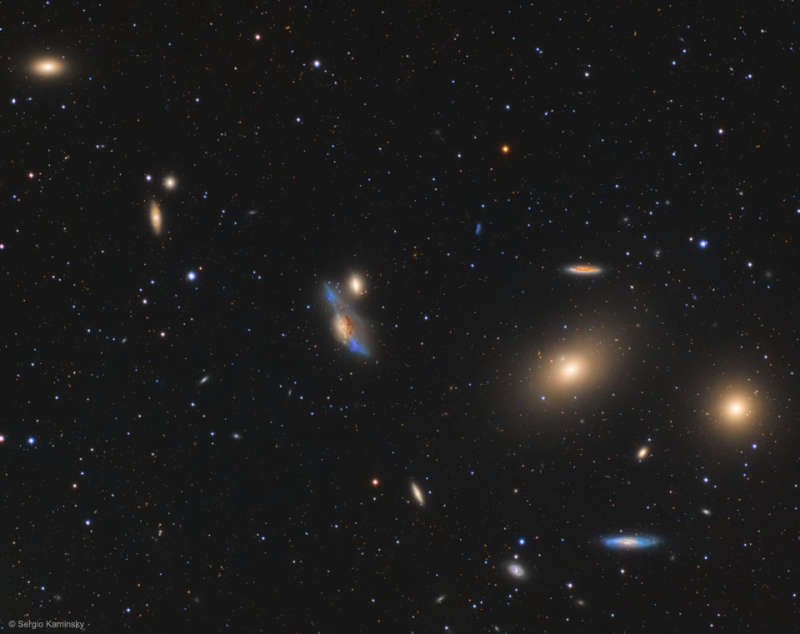
|
Credit & Copyright: Sergio Kaminsky
Explanation:
Across the heart of the
Virgo Cluster of Galaxies
lies a striking string of galaxies known as
Markarian's Chain.
The chain,
pictured here, is highlighted on the right with
two large but featureless
lenticular galaxies,
M84 and
M86.
Prominent to their lower left is a pair of interacting galaxies known as
The Eyes.
The home Virgo Cluster is the nearest
cluster of galaxies, contains over 2000 galaxies,
and has a noticeable gravitational pull on the galaxies of the
Local Group of Galaxies surrounding our
Milky Way Galaxy.
The center of the
Virgo Cluster is located about 70 million
light years away toward the constellation of Virgo.
At least seven galaxies in the chain
appear to move coherently,
although others appear to be superposed by chance.
Note:
APOD now available in Ukrainian
|
January February March April May June July August September October November December |
| ||||||||||||||||||||||||||||||||||||||||||||||||
NASA Web Site Statements, Warnings, and Disclaimers
NASA Official: Jay Norris. Specific rights apply.
A service of: LHEA at NASA / GSFC
& Michigan Tech. U.
Based on Astronomy Picture
Of the Day
Publications with keywords: Virgo Cluster - galaxies
Publications with words: Virgo Cluster - galaxies
See also:
- APOD: 2025 August 28 Á Galaxies, Stars, and Dust
- Virgo Cluster Galaxies
- APOD: 2025 March 2 Á The Hubble Ultra Deep Field in Light and Sound
- APOD: 2024 December 31 Á The Twisted Disk of NGC 4753
- APOD: 2024 December 18 Á NGC 660: Polar Ring Galaxy
- Stellar Streams in the Local Universe
- APOD: 2024 April 15 Á The Cigar Galaxy from Hubble and Webb
